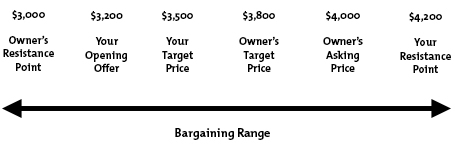There are 12 characteristics common to companies that successfully reward employees for the highest levels of performance.
Bonuses are controversial these days. Proponents believe that bonuses and monetary rewards increase productivity and organizational performance, while opponents state that bonuses create higher pay inequality — which leads to greater turnover — and that the long-term effects of bonuses do not seem unequivocally positive.
But in this debate, a key question is often overlooked: How important are bonuses to an organization's sustained success? To answer this, look at the role they play in creating high-performance organizations (HPOs).
An HPO achieves financial and non-financial results that are significantly better than those of its peer group for five years or more by disciplined focus on what really matters to the organization.
The characteristics of high performance were identified as part of a study by research organization the HPO Center beginning in 2003. The findings were published in 2012 in Andre de Waal's book What Makes a High Performance Organization: Five Validated Factors of Competitive Advantage That Apply Worldwide. The research included a review of 290 academic and management publications in the area of high performance and excellence. The HPO Center then organized the collected information and created a questionnaire that was distributed worldwide.
Approximately 2,400 respondents from 1,475 organizations in 50 countries filled in this questionnaire indicating how their organization scored on these characteristics and performed against their peer groups. Subsequent statistical analysis of the collected data showed there are 35 characteristics that have a direct positive relation with competitive performance. These characteristics always appear in five groups — the HPO factors. When an organization scores higher on these five HPO factors than its peer group, it also surpasses its peers financially and non-financially.
In 55 of the 290 studies reviewed, 12 potential HPO characteristics were identified with respect to bonuses and reward systems:
Fair reward and incentive structure: Employees must see that reward systems pay out a fair compensation, and the reward system should value the employees. Companies should make sure they know what motivates employees to excel — often equity is important to them. Satisfactory compensation and fringe benefits contribute to a sense of fairness.
Reinforce core values and strategy: The best organizations devise and implement reward systems that reinforce their core values and strategies. Companies should make sure all policies always are congruent with their strategy, even when they use different types of pay policies. In this way, whatever policy a manager applies will always benefit strategy implementation and support the business' core values.
Link pay and incentives to long-term performance: Aligning employee incentives to an organization's long-term performance has a positive link to productivity. Many companies have found success creating a reward system that contains short-term performance indicators — rewarding yearly financial performance — and long-term performance indicators — rewarding non-financial indicators such as customer loyalty and employee loyalty.
Rewards based on relative performance: Success should be rewarded based on relative performance, not just competition. It may be effective to design a system that rewards two types of competitive performance. First, address the results a manager achieves on key financial and non-financial indicators when compared to those of the company's top three competitors. Second, the same key indicators can be compared among the managers in the company. In this way, managers are incentivized not only to achieve their budgets but to improve beyond performance levels for internal and external competitors.
Group compensation: Reward systems should emphasize group performance over individual performance. A group performance reward scheme can prompt colleagues to help each other with advice and support.
Creative and flexible rewards: Reward systems should reflect the flexibility in the market. A business that applies a wider repertoire of approaches toward reward management by tailoring the reward structure to employees' different needs — perhaps based on field or skill level — will be a more attractive employer than a competitor with a less flexible system.
Pay-for-performance: People should be rewarded with performance-based pay, or only for the results they achieve. Some companies are doing away with old incentive systems, which often reward tenure and age. New systems can grant salary increases on the results employees achieve on pre-set targets. When employees are involved in setting these targets, commitment to the new system increases.
Emphasis on intrinsic rewards: Monetary rewards should be restrained in favor of more meaningful intrinsic rewards such as fun, personal development, teamwork, challenge and accomplishment.
Atrion Networking Corp., an IT services company, charted its critical success factors and performance indicators and passed them on to everyone in the organization. Good performances on these indicators were recognized with small bonuses, honorable mentions and prizes such as a parking space near the entrance for the month's best employee — a person elected by fellow employees. Atrion uses this system to reward employees but also to focus on what is important to the company. "We have an absolute focus on quality, not on cash," said Melissa DelPrete, a member of the management team.
Employee stock as incentive: Employees can be rewarded with stock to increase their commitment and financial interest in the company. Svenska Handelsbanken, a global Swedish bank with locations around Scandinavia and the U.K., uses a profit-sharing system reward. If the bank reaches its targets, then part of the profit is set aside for the employees and put into a fund where it stays until the employees retire, which gives them a long-term perspective instead of the short-term focus bonuses create. They are greatly interested in how the bank performs in five and 10 years because they will not get the money until they retire in 20 or 30 years. The money is invested on the market with the biggest investment being in Handelsbanken shares. This keeps the employees' interest in the bank's performance. And even if they leave Handelsbanken before age 60, the money will remain in the fund for them until they reach that age.
"At Svenska Handelsbanken we do not have bonuses," said General Manager Mikael S?rensen. "We have a profit-sharing system, which is completely different from a bonus system. If the bank reaches the corporate goal — which is to have a higher profitability than our competitors — then part of the profit is set aside for the employees. It is a fixed amount for every employee, no matter if you are CEO or a first-year assistant."
A minimum threshold: Reward systems with a minimum threshold for incentive pay reduce cost, whereas those without a cap on payouts increase motivation to achieve extraordinary results. Using a gain-sharing program without a cap can result in considerably increased profitability.
Skill-based pay: Reward systems should support employees in strengthening their skills by rewarding them for development achievements. A good way to begin this process can be to discuss with employees what motivates them in their work and what non-financial rewards in the form of skill-based training they would like. With this approach, employees are often much happier with the tasks they need to do and with the reward of a job well done.
Rewards for results: Employers should reward employees for their performance and not automatically for getting a year older or just doing their best. This approach encourages high-performing employees to take pride in their accomplishments by doing things that matter, doing them well and then receiving the recognition — financial or otherwise — for these accomplishments.
Despite this research into what makes a successful bonus, during the statistical part of the HPO research it became apparent that none of the 12 characteristics showed a significant correlation with competitive performance, which means these characteristics were not related to organizational performance. In other words, a successful use of bonus pay doesn't necessarily make a successful company. Using bonuses will therefore neither help nor hurt organizations in achieving sustained high performance, but high-performing organizations are just as likely to use bonuses or certain types of reward systems as they are not to use them.
To clarify, the HPO research does not show that bonuses and well thought-out reward systems are not important — they can help talent managers create suitable reward systems for their organizations. But reward systems are not distinguishing factors to create and sustain HPOs — they are hygiene factors. Organizations need to have an appropriate reward system — whether or not it includes bonuses — that employees consider to be fair and equitable.
If such a system is not in place, the organization will face opposition from employees, and becoming an HPO will be virtually impossible. If such a system is in place — and it does not seem to really matter what type of reward system it is as long as it is appropriate for the organization — employees will consider it normal and likely will be more content. Then the organization can start thinking about how to turn itself into a high-performance organization.
Andre de Waal is the academic director for the HPO Center in the Netherlands, associate professor HPO of the Maastricht School of Management in the Netherlands and author of What Makes a High Performance Organization? Five Validated Factors of Competitive Advantage That Apply Worldwide.
Thanks to Andre de Waal / TalentMgt / MediaTec Publishing Inc.
http://talentmgt.com/articles/view/do-bonuses-work/?interstitial=tmwb012213
| To Get Uninterrupted Daily Article(s) / Review(s) Updates; Kindly Subscribe To This BlogSpot:- http://ZiaullahKhan.Blogspot.com/ Via "RSS Feed" Or " Email Subscription" Or "Knowledge Center Yahoo Group". | ||
| Amazon Magazine Subscriptions | Amazon Books | Amazon Kindle Store |
| Amazon Everyday Low Prices, Sales, Deals, Bargains, Discounts, Best-Sellers, Gifts, Household Consumer Products | ||



